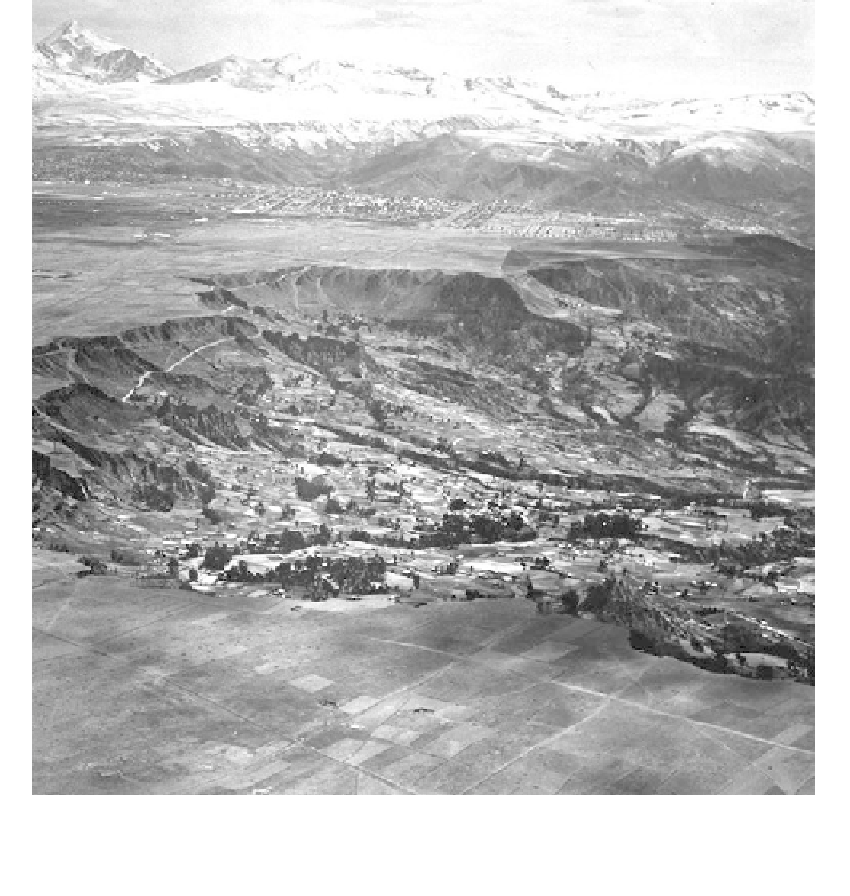Environmental Engineering Reference
In-Depth Information
FIGURE 9.56
The head scarp of the Achocallo mud flow, near La Paz, Bolivia (see
Figure 9.55)
.
some locations (see
Section 7.6.5).
Rock varies from outcropping at the surface in stream
valleys to over 70 m in depth. The quick clays are formed by leaching of salts, but the
leaching is believed to be caused by artesian pressure in the rock fractures from below,
rather than downward percolation of water (Bjerrum et al., 1969). Sensitivity values are
directly related to the amount of leaching and the salt content, and are greatest where rock
is relatively shallow, about 15 to 35 m.
Slope failures are common events. The natural slopes are stable at about 20° where there
is a stiff clay crust. Seepage parallel to the slopes occurs in fissures in the clay, and the stiff
clay acts as a cohesionless material with slopes at
i
38° (see the infinite
slope problem in
Section 9.3.2)
.
Stream erosion causes small slides in the weathered stiff
clay; the sliding mass moves into the soft clay, which upon deformation becomes quick
and flows. In one case cited by Bjerrum et al. (1969), 200,000 m
3
1/2
φ
', and
φ
flowed away from the
source in a few minutes.
Solution:
Since stream degrading appears to be a major cause of the flows, Bjerrum et al.
(1969) proposed the construction of small weirs to impede erosion in streams where fail-
ures pose hazards.


